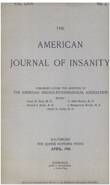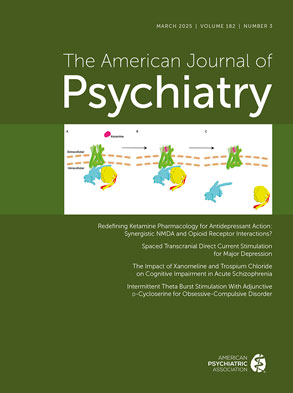Abstract
The theory of epilepsy expounded in the present paper is founded mainly upon structural considerations. The histological data have been interpreted largely from a functional point of view. The theory lays claim to some originality in two directions, in setting forth, namely, the properties of a typical epileptogenic focus in the cerebral cortex, and the nature of that change in cortical tissue which favors epileptic discharges. The characteristic feature of a typical prime focus is described as the separation of a normal cell-group from its normal control by other cell-groups and the impact upon the receptive surfaces of these normal cells of a steady, intimate, abnormal pressure—both segregation and compression effected by neuroglia overgrowth. That feature of cortical tissue which favors the spread of epileptic discharges is described as due to a simplification of cell arrangements, arising in the destruction of controlling elements with maintenance of motor elements. In the production of both prime focus and the abnormal tissue which permits uncontrolled discharge, the neuroglia tissue plays a characteristic part—exerting an active continued pressure in the first instance, and readily permitting lateral discharges and the activation of great groups of motor cells in the second instance. In the former case we see a fresh example of the irritative property of heightened tension—only here exhibited quite in miniature. In the latter instance we are dealing with conditions of still greater theoretical interest, approximating, though with diverse outcome, the loss of insulation seen in foci of disseminated sclerosis. The findings suggest the widely different effects upon nervous tissues of active and of quiescent gliosis.
From a review of pertinent literature, it appears that physiological interest is converging upon the field here considered. Fiber-tract studies have failed to cope with other problems than those of linear transmission along well-insulated paths. Only in the case of multiple disseminated sclerosis and certain studies in interstitial neuritis, have the occurrence and nature of lateral discharge from fiber to fiber and the effects of intimate fiber pressure been considered. And in these instances it may well be proposed that a fresh abnormal type of synaptic tissue has been provided. Physiological interest is now levelled upon the synaptic tissues in general. And, if a synapse is a physical surface of separation between neurones, it is serviceable to inquire what are the conditions which can readily modify the synapse. The neuroglia tissue, formerly regarded as purely supportive in function, here rises to a high scale of importance. The present essay points out two effects of gliosis upon synaptic tissues, the one an active irritative one, the other a passive effect. A review of the fundamental views of Hughlings Jackson serves to demonstrate the perfect generality of epileptic phenomena at all levels, and makes clear why the writer sought knowledge about epilepsy in organic cases. If the writer advances a case in which the prime epileptogenic focus consists in an active gliosis within a space of one cubic centimeter in the cornu ammonis, he cannot be charged with holding that all cases of epilepsy are so brought about. He describes what he regards as a typical prime focus. He conceives fundamentally that similarly forcible and lasting stimulation of a receptive surface, standing in important relations to the motor system, might produce epileptic convulsions just as effectively as the gliosis he describes. In this sense complex emotions or intestinal worms might conceivably stand in as effective a relation to the nervous system as the intimate pressure of early gliosis upon the expansions of elements whose currents eventually play upon the muscular system.
Wholly distinct from these considerations about epileptogenic foci are those points which are developed concerning tissues facilitating discharge. A review of various authors discovered much difference of opinion and considerable interpretation of phenomena as secondary. The phenomenon of gliosis has not escaped numerous observers, among them the very observers that have emphasized the alterations of the second cortical layer as important in epilepsy. But this gliosis has been regarded as secondary, and our attention has been diverted rather to certain cell and nuclear characters which are looked upon as specific. The writer has been tempted to regard these nerve-cell changes as vegetative and at any rate as not further analyzable, but to accept them as examples of a lesion which will interfere with normal control of muscular elements. The cases presented here go far to prove that the nerve cells of the outer layers are the first to disappear in cases of atrophy and even along the edges of ischemic areas. The tendency to the formation of tissue favorable to epileptic discharge is, according to this view, a somewhat general tendency in cerebral tissue, so long as the destroying forces stop short of the motor elements and permit any communication, however slight, between the motor elements and the receptive side of the body. A reduction or simplification of the system through destruction of the smaller elements of the cerebral cortex procures new reflex arcs with fresh surfaces of separation which are perhaps even simpler and more automatic than the spinal arcs and synapses. The peculiar features of the epileptic discharge depend upon the inertia of currents travelling in simplified arcs, and upon the lack of energy-absorbents en route. The cerebral arcs normally escape automatism through a multitude of synaptic connections; under epileptic conditions the cerebral mechanism approaches in fatality the spinal mechanism. Under this conception epilepsy and phenomena like clonus are readily perceived to belong to a single logical group.
The phenomenon of epilepsy, in short, requires the intactness and even the normality of some well-defined route from stimulus to muscles. If we conceive the stadia of this route set end to end with the cerebral synaptic tissue in the middle, we perceive that toward the two ends of the linear series it becomes increasingly difficult to provide conditions which will produce generalized and spreading convulsions. Destruction of elements at any point in the route should at first sight exclude the production of epilepsy. And so, in most cases, the destruction of the efferent paths will exclude epilepsy. In the afferent paths, however, the very process of destruction often constructs new and potent surfaces of stimulation which act as epileptogenic foci; and, in the cerebral synaptic tissue, the strata are so constructed that the loss of smaller, central, modifying, and inhibitory elements is effected prior to the loss of the major elements which are essential to the intactness of the great route. And these major efferent elements can themselves be subject from time to time to stimulation afforded by the contractile energies of growing neuroglia. Epileptogenic stimuli are applied in all cases to those elements having a forward direction, so that the reaction is in most cases, if not necessarily a sensorimotor reaction in Hughlings Jackson's sense.
What are the applications of this theory to the phenomena of idiopathic epilepsy? In certain cases of idiopathic epilepsy there seems to be grave doubt whether any adequate epileptogenic foci can be discovered. There is more hope that tissues favorable to epileptic discharge shall be discovered, if the proper methods are employed.
We can see some reason for the absence of effective foci in hereditary cases, particularly if we bear in mind the epileptic offspring of Brown-Séquard's injured guinea-pigs. With the onset of topographic and stratigraphic knowledge of the cerebral cortex, we shall approach more nearly to a definition of tissues suitable for the propagation of epileptic discharges. So far it seems that such synaptic tissues are characterized by abnormally simplified arcs whose impulses are the more automatic through the lack of countercurrents from surrounding cells. Whether we are to look in inherited serum properties for the production of such conditions, the future will decide. Destroying agents of moderate power tend to alter tissues in this direction.

